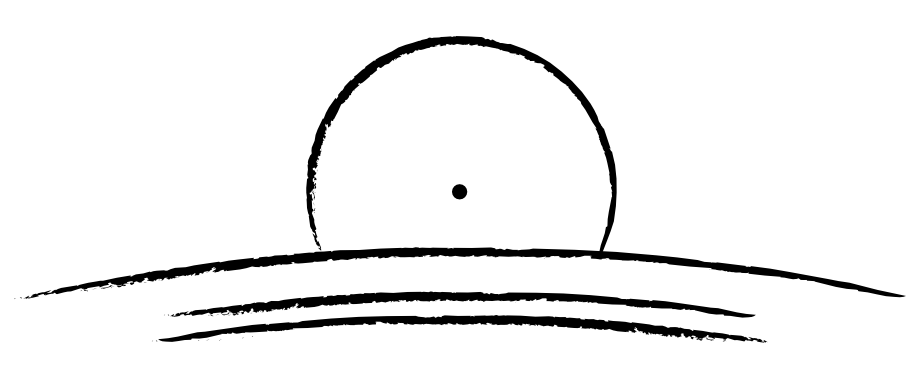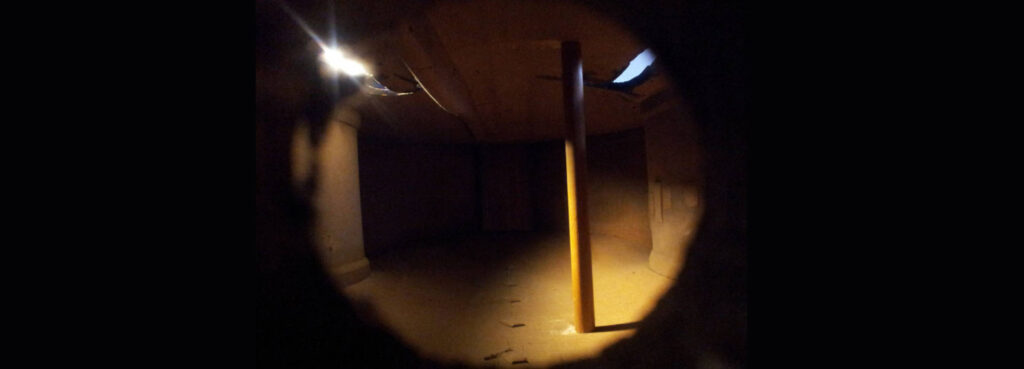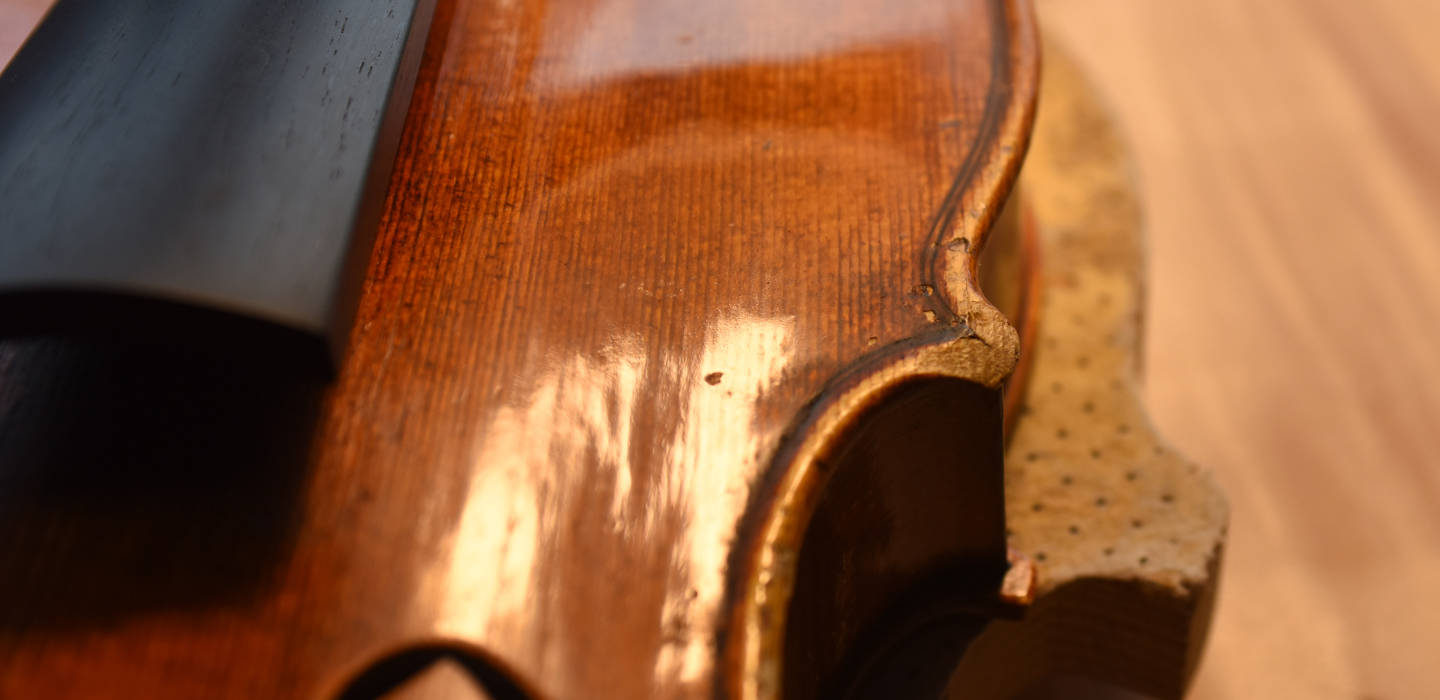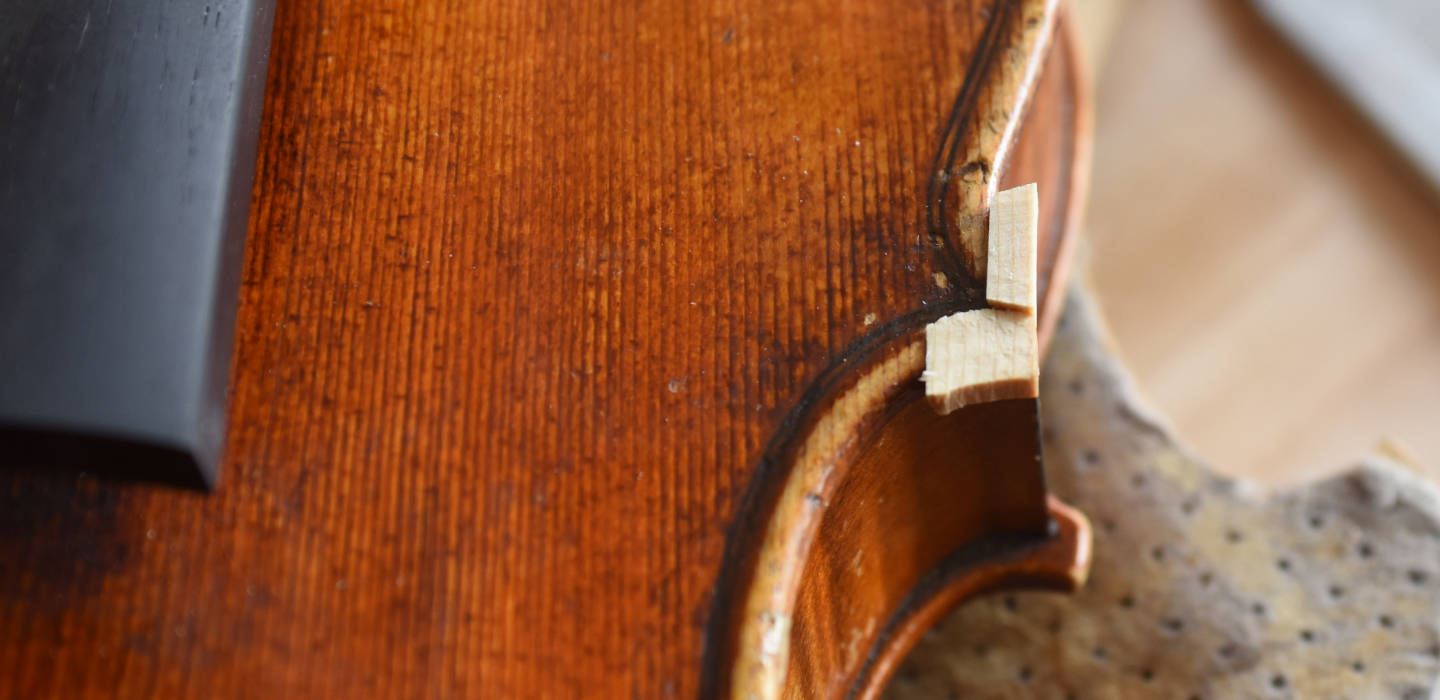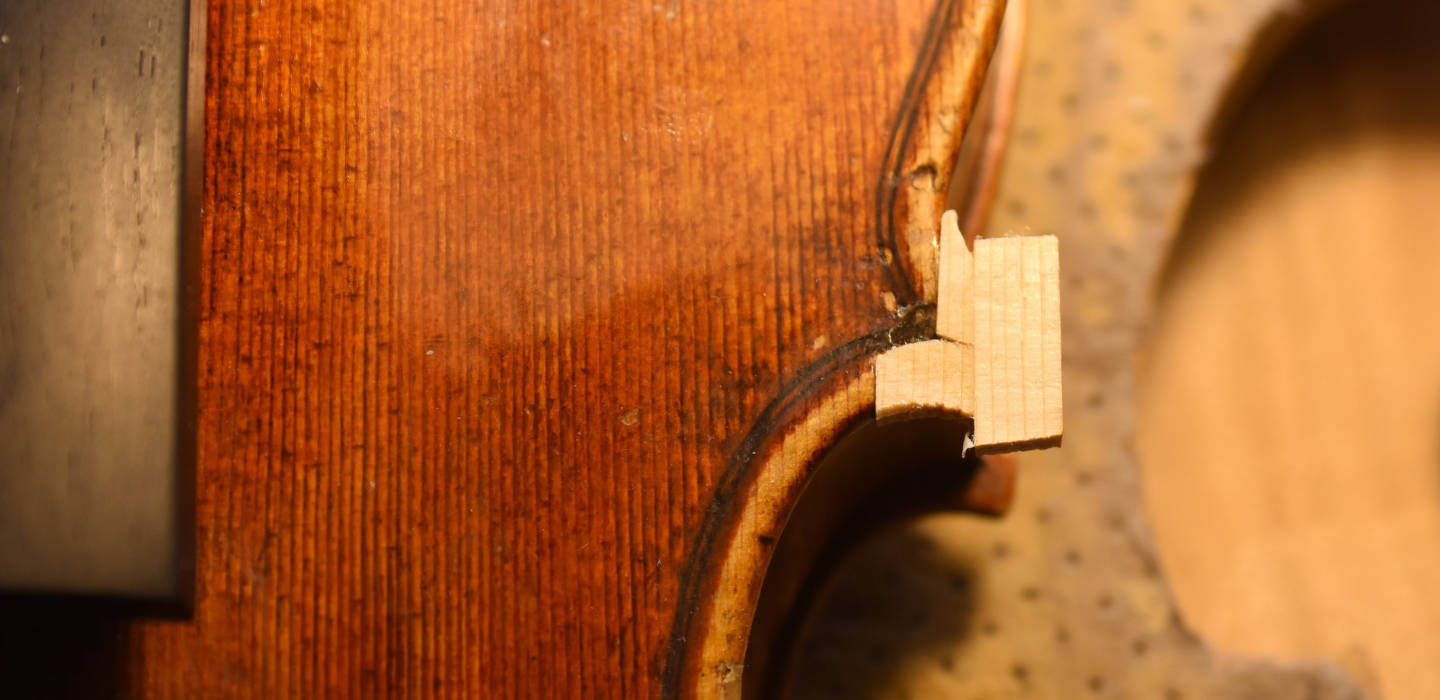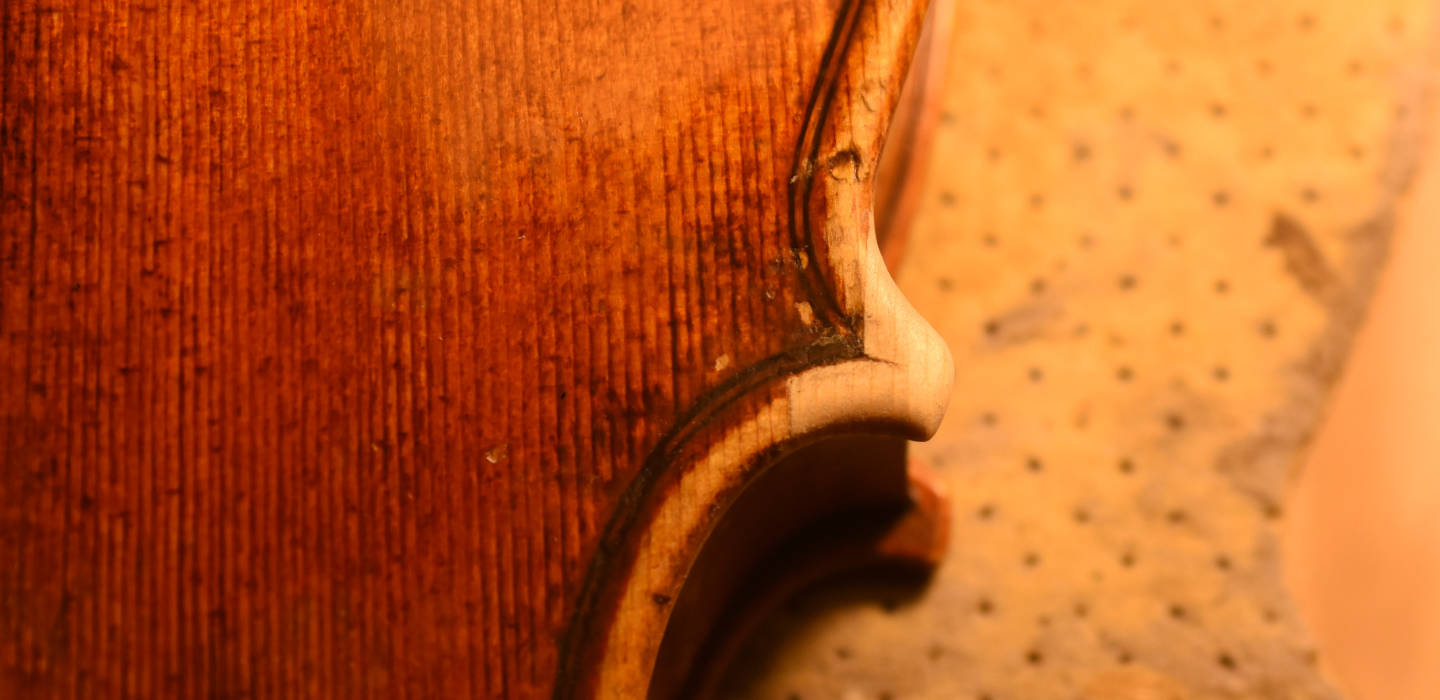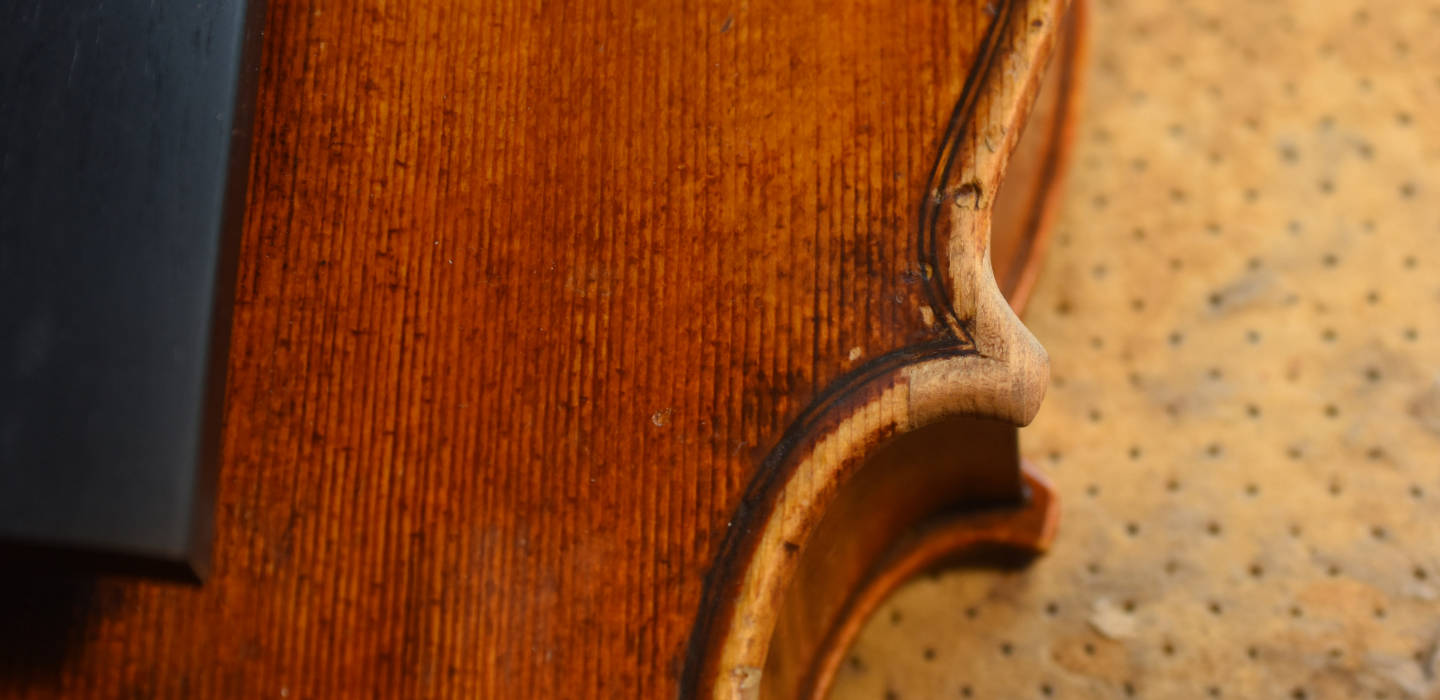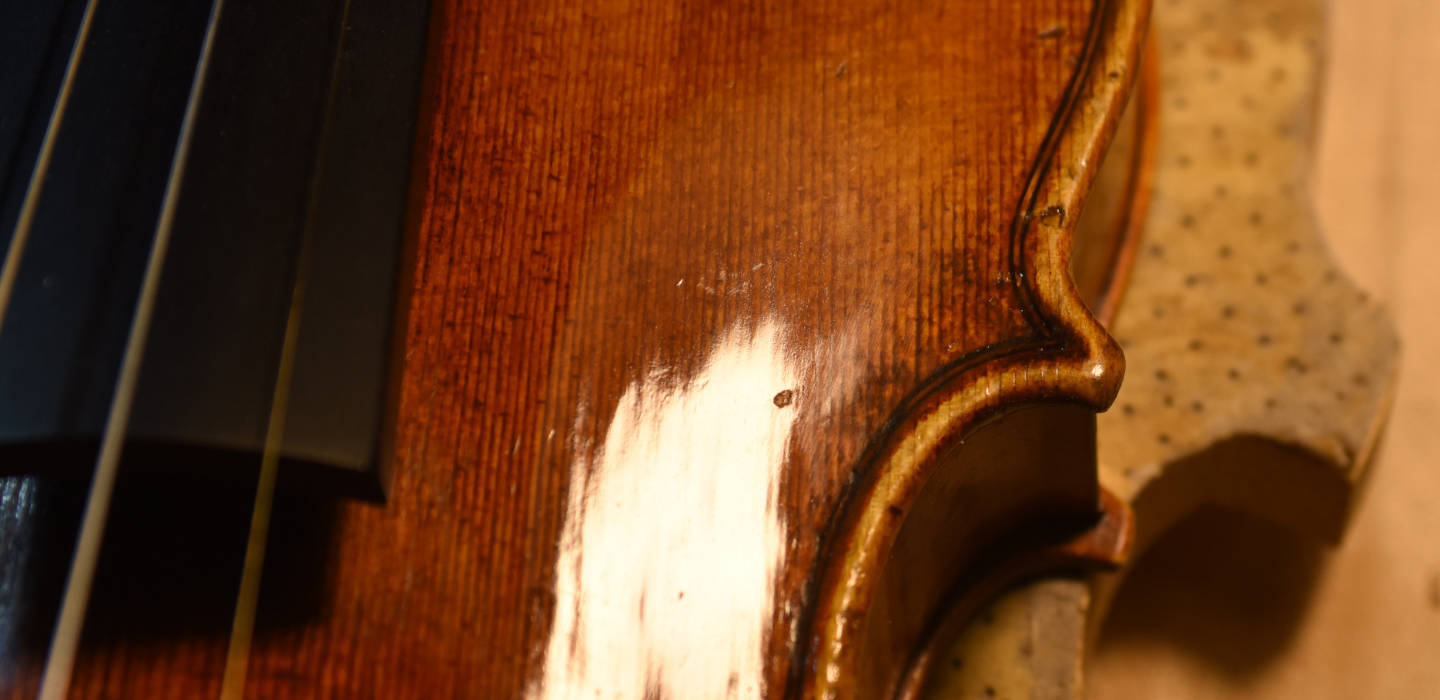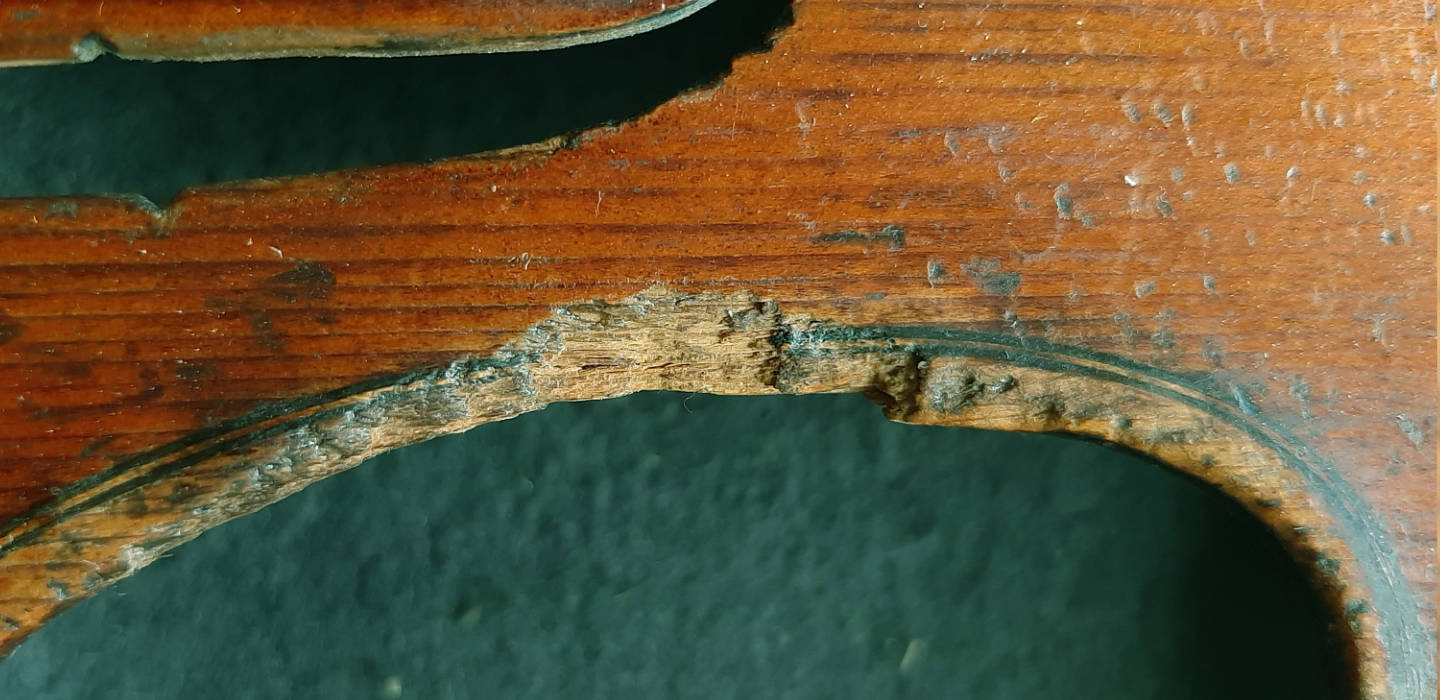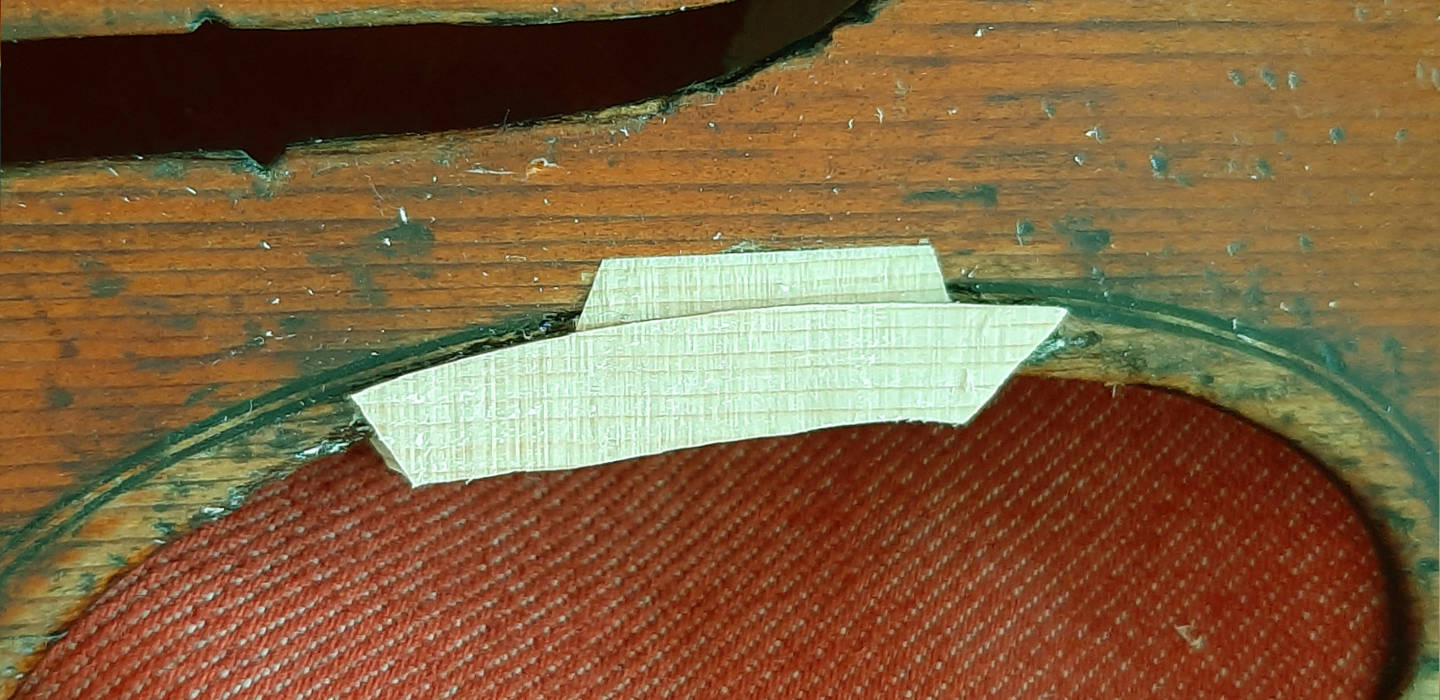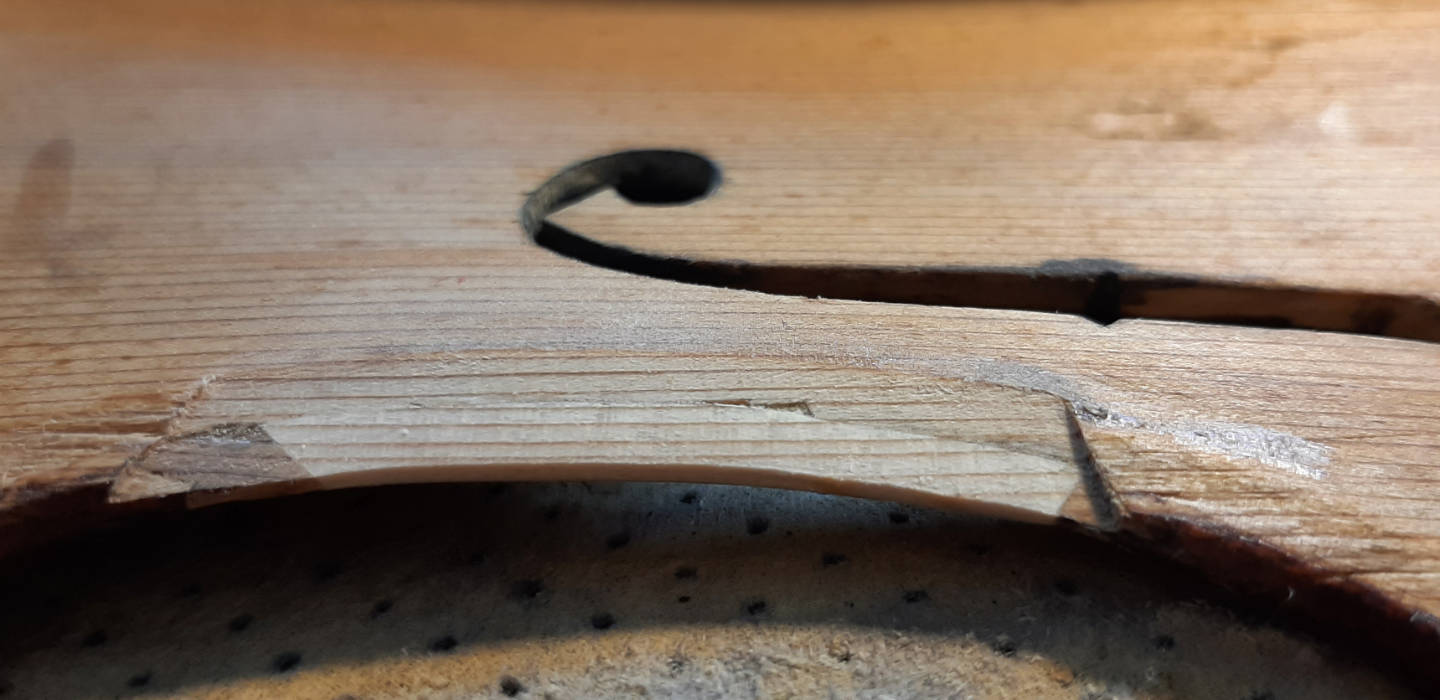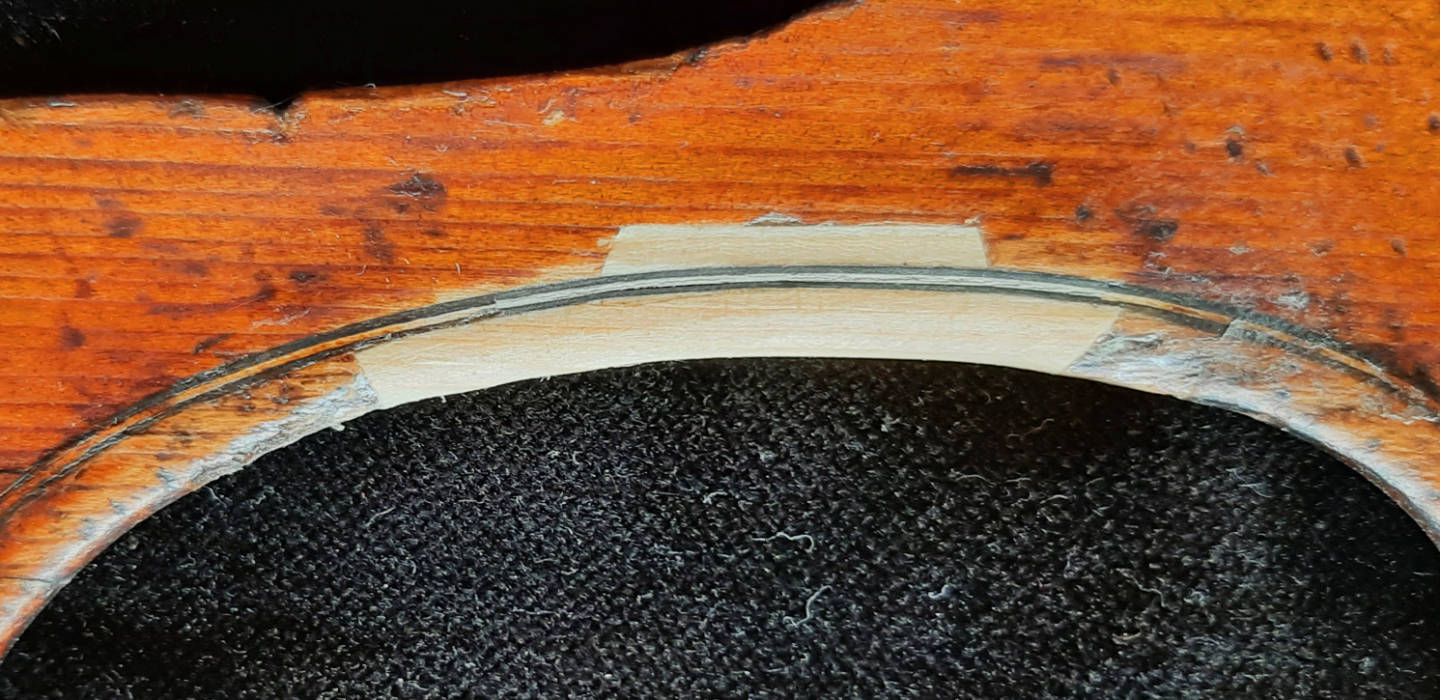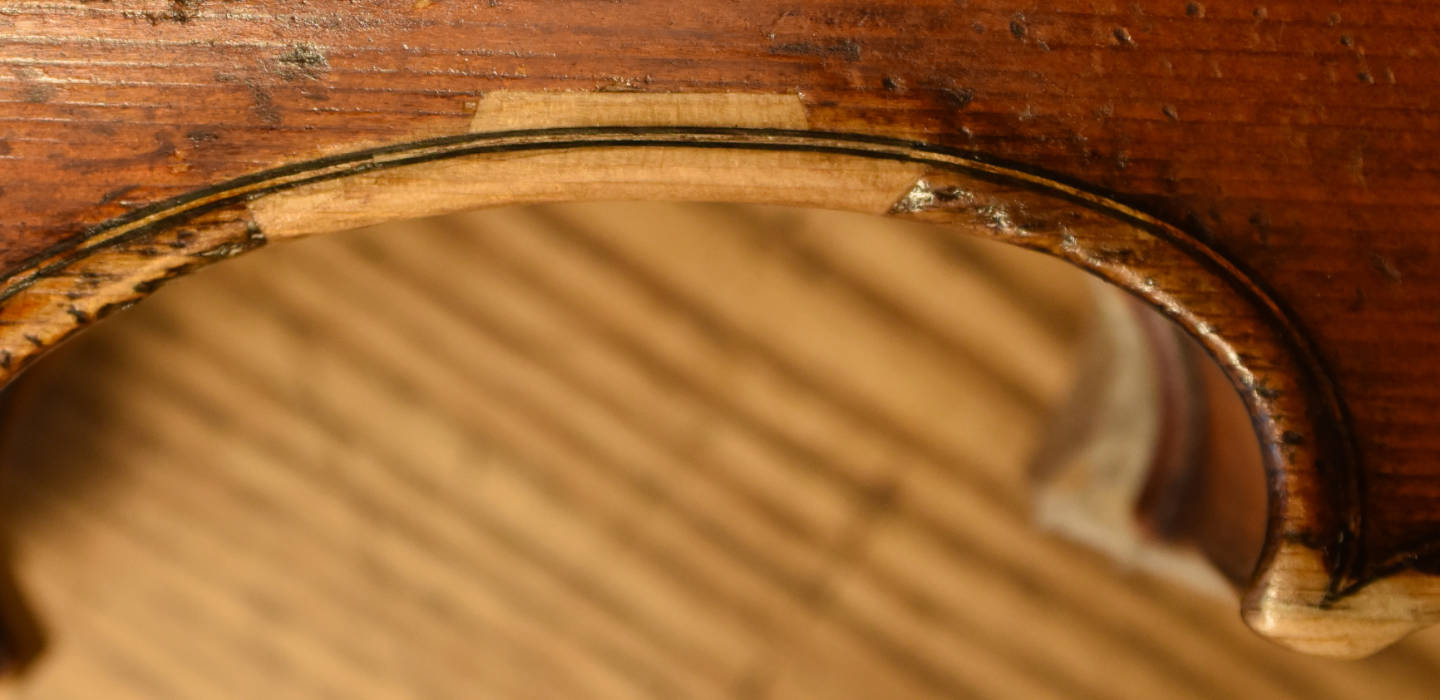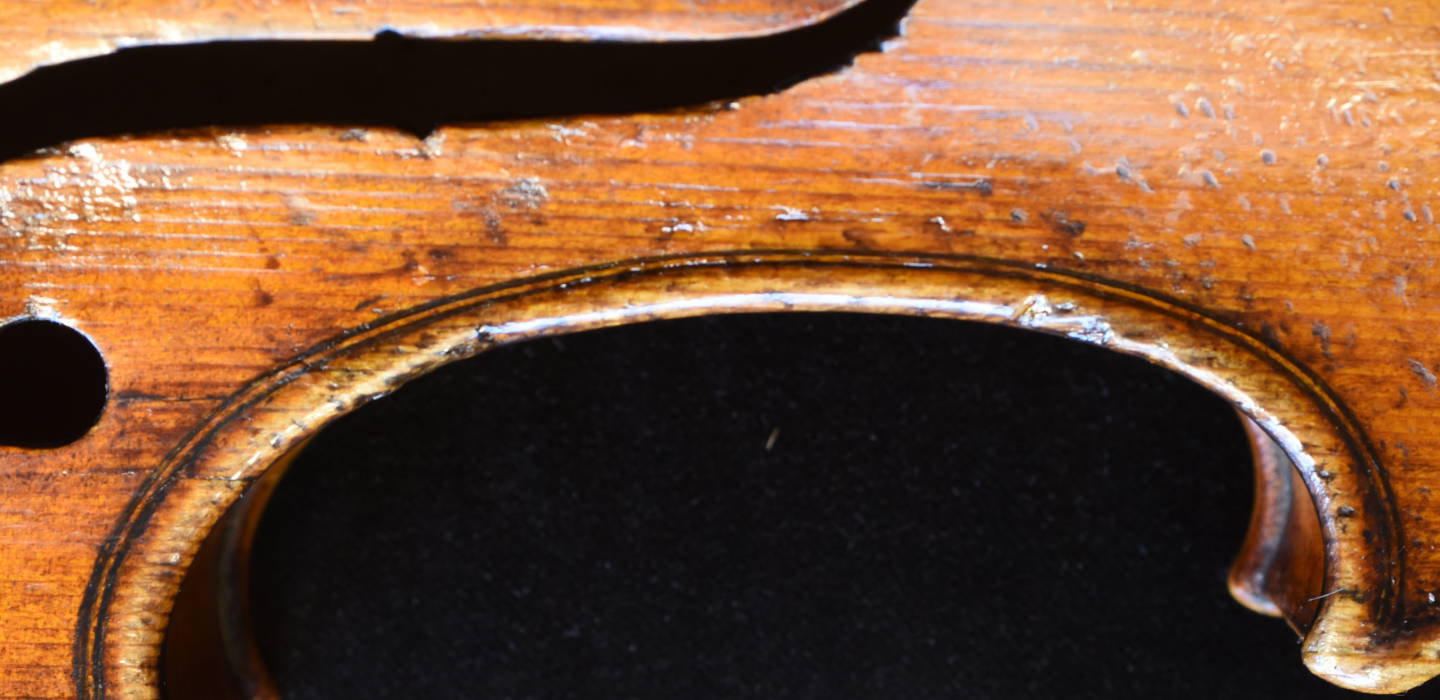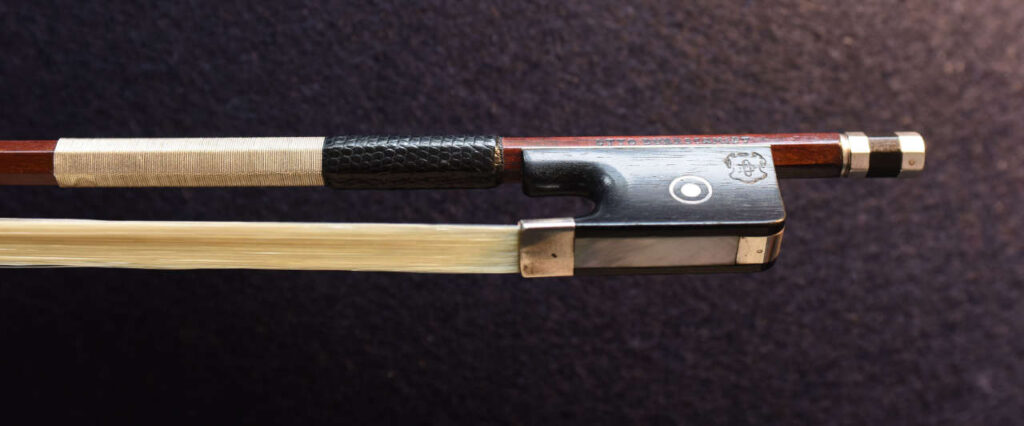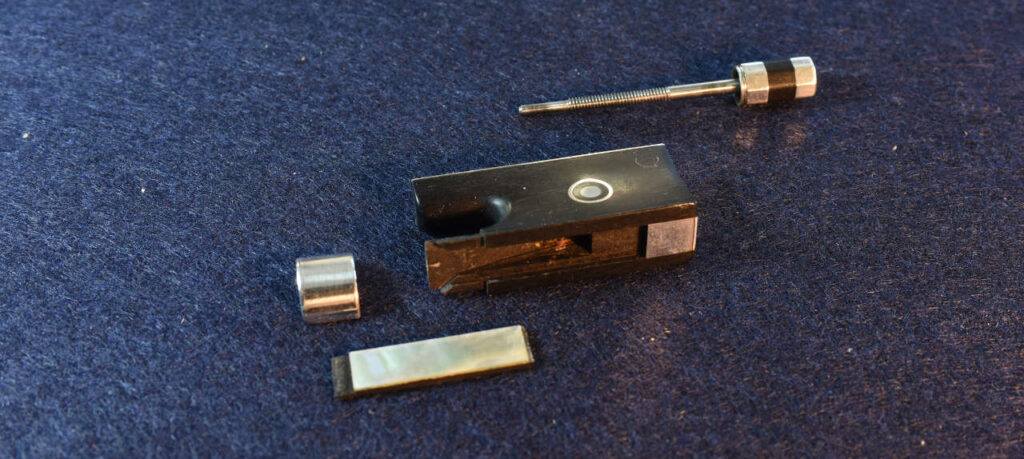Repair
Every repair, restoration, or sale starts with good advice in an important conversation.
What is the goal of the repair? What is it going to cost? When would the instrument or bow be ready?
In conversation with you, we find out together what is necessary, feasible, and financially possible.
If the repair fee exceeds the value of the instrument or bow, you are the one who should decide whether its sentimental value is greater for you and the work should nevertheless be carried out. You can only make a wise decision once you have been well advised.
Repair INSTRUMENTS
Fingerboard
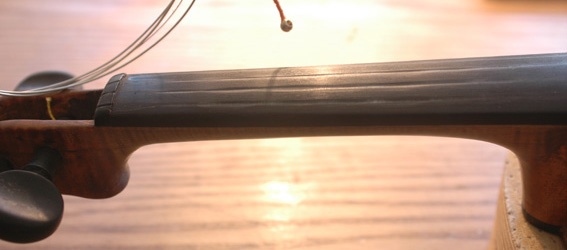
Since the string is always pressed down on the fingerboard in the same places, it is necessary to dress the fingerboard on a regular basis. This is done with planes, files, and sandpaper until all the “holes” have disappeared. Don’t worry – a fingerboard usually lasts 20 years, and only a few tenths of a millimeter are removed during dressing.
Since wear is gradual, musicians adjust to a damaged fingerboard by pushing deeper into the holes and dents with more force. Unfortunately, fingerboards are often not dressed until major problems such as buzzing or impure fifths appear.
Depending on playing style, intensity, and wood quality, the point in time at which the fingerboard needs to be dressed tends to vary. For professional musicians, it is usually done as part of annual maintenance; for amateurs, every few years. A well-dressed fingerboard usually provides great relief.
Bridge
Hopefully, the bridge of your instrument is perfectly straight. We must bear in mind that a violin or viola bridge is under about 10 kg of pressure (although the bridge itself only weighs about 3-4 g). A cello bridge has to withstand about 30 kg. Bridges that have become crooked under the load must be replaced before they break with a loud crash or fall over. This also applies if the strings have cut deeply into the bridge and the string action has become too low. Remember: the bridge is only clamped between the top and the strings – it is not glued on!!
Soundpost
The soundpost is a cylindrical spruce rod that is clamped between the belly and the back. It must be precisely adjusted to the instrument’s inner curvature, placed in exactly the right spot with the correct tension. The soundpost transmits the vibrations from the strings and the belly to the back – and vice versa. The soundpost is also referred to as the soul of the instrument. Its exact position and optimal fit thus need to be checked on a regular basis.
Varnish
Even though the instrument should only be touched at the neck, a certain degree of wear and tear cannot be avoided, e.g. at the upper right rib. Unvarnished open wood is at the mercy of dirt and moisture. Therefore, when we do maintenance or repair, we make sure that there is sufficient protective lacquer on exposed areas. Rosin dust must be regularly removed from the instrument, and the varnish needs to be polished. Part of your music-making routine should be to wipe the instrument with a dry cotton cloth immediately after playing.
Pegs
Pegs only work well if they are used and lubricated regularly. Since wood swells and shrinks in different proportions longitudinally and transversally, peg turning smoothness needs to be checked on a regular basis. Ideally, the pegs are checked and lubricated every time the strings are replaced.
Restoration
Strictly speaking, there is no difference between repair and restoration.
There are smooth transitions between the two terms.
“Repairs” are usually carried out due to suddenly occurring damage: scratches, open glue spots, or cracks caused by major or minor accidents. In any case, work on an instrument must always be planned and carried out in such a way that as much of the original substance of the instrument as possible is preserved and nothing stands in the way of a new repair in a few years or decades.
Restoration, on the other hand, means bringing an instrument back to original condition as closely as possible. For example, an originally baroque instrument could be restored to baroque.
A good luthier would normally not convert an original baroque instrument into a modern instrument with a steeper neck angle, modern fingerboard, longer bass bar and a new bridge, even if the owners want to play the instrument in a modern way. Conversions are not a simple question. They regularly lead to discussions.
BOW REPAIR & maintenance
Bowhair
Bowhair needs to be replaced on a regular basis.
After some time, the hairs lose their grip on the bow: it slips over the strings, and playing in pianissimo becomes impossible. If even fresh rosin is no longer of any help, the only thing left to do is to change the hair.
New, unused hairs have a flaky hair surface that serves to collect the rosin dust. The pressure and speed of bowing melts the rosin, and the bow hairs become sticky. This allows the bow to pull on the string and cause it to vibrate – a sound is produced. Each time the bow is played, the scaly hair surface is slowly worn away.
Professional musicians change the bowhair once or twice a year.
Depending on individual playing style and on pieces that require more bowing force, individual hairs can occasionally break. The hank of hair should also be replaced if, as a whole, it has become very thin.
Bowhair is a valuable natural product, usually stemming from the tail hairs of Siberian or Mongolian horses.
If you open the case after a long break from playing and find bow hairs lying around as if they had been cut off, the culprit was probably not your partner or your little brother with scissors, but the larva of a museum beetle (Anthrenus museorum). The larvae feed on hair and dander, among other things, and are dreaded visitors in natural history museums, where they like to eat the exhibits. In case of infestation, we recommend removing the hairs and vacuuming out the case. It would also be helpful to give your case a sunbath on the terrace on a hot day, or to let it spend a few days in the freezer – of course without the bow and instrument. Special insect repellents are also effective against the museum beetle and its larvae. Just contact us!
Leather
The thumb leather provides support for the thumb and index finger on the bow stick, and protects them. Some musicians prefer thick, soft leather; others like it thin and smooth. Whether lizard, kangaroo, or goat leather – we have the right material for you. Lizard leather is particularly durable, but unfortunately also subject to travel restrictions, which we already want to point out to you right now.
Winding
The winding made of gold, silver, nickel silver wire, or spun thread protects the bow stick and is important for its overall weight and balance.
Varnish
After playing, the bow stick should be cleaned just like the instrument, to make sure that no rosin settles on the stick. The end of the stick is subject to greater stress due to pressure and hand perspiration. It is therefore important to ensure that these areas are always protected with a thin layer of varnish.
Head plate
The head plate is often underestimated. Consisting of the black backing and the white head plate, it protects the head tip as well as the bow head itself, which is subjected to great stress coming from the head wedge and the hair tension.
Eyelet and screw
Eyelet and screw are a fairly simple construction designed to tense the hair. However, the brass eyelet tends to wear out over time and needs to be replaced – at the latest, when the screw starts to slip and the bow can no longer be tensed.
Slide
The frog mortise in which the hair is fastened is covered by what we call the “slide”. It consists of an ebony plate with mother-of-pearl overlay, and is fitted into the frog. The slide must be repaired or replaced when the ebony or mother-of-pearl becomes too worn.
Pearl eye
The eyes are also made of mother-of-pearl. If they are very worn or even missing, you should replace them; otherwise, the edges of the surrounding ebony will also become worn.
We will never claim that we can do anything or know everything.
Our mission is to complete all projects successfully and promptly, and to give you good advice. If your problem could be better solved in another workshop, we will tell you so. Customers are sometimes surprised, but at the family doctor we are also happy when we get a referral to a specialist.
We will be happy to make an appointment with you.
Tel.: 0049 3643 45 74 377 | Contact
